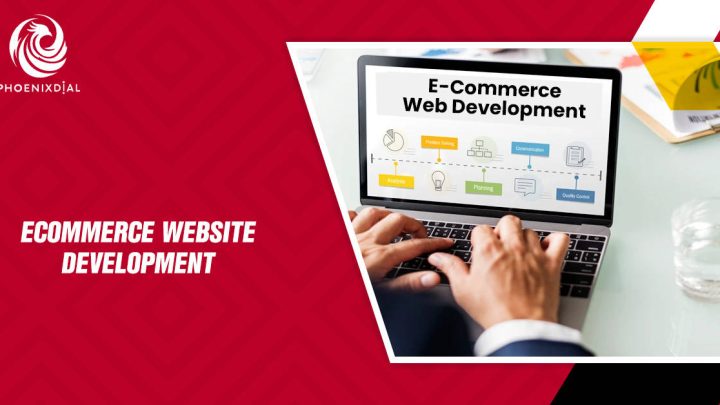eCommerce Website Development | Professional Services
eCommerce Website Development | Professional Services Published September 4, 2025 Get A Free Quote Did you know that over 70% of today’s customers prefer online shopping versus going to a physical store? The numbers continue to increase every year, and 2025 is looking to be the best yet for buying online. Everyone enjoys the ease of purchasing from the comfort of home, shopping around, comparing prices, and ordering. But the problem starts there—most companies are not exploiting this potential market because they don’t have a good ecommerce website development strategy. Their websites might be slow, old, or not equipped with necessary features like secure checkout and mobile responsiveness. When that happens, potential customers leave and sales are lost. This is where Phoenix Dial steps in. As a reputable service-oriented firm with a team of expert developers, we construct online shops that not only are beautiful but also optimized to perform. We concentrate on making websites smooth, safe, and easy to use so that businesses can acquire buyers, establish trust, and make money. We’ve had hands-on experience for decades, so we know how to mix design, technology, and marketing to make one seamless shopping experience. Here, we are going to dissect all that you should know about ecommerce website development in 2025. From why it matters now more than ever, to the core components every site needs, to the costs involved and a step-by-step process for building your own, this guide will help you understand how to create a website that grows your business online. Start Growing Your Business Today Get a free, personalized quote via WhatsApp for your business. No pressure—just smart solutions tailored to your goals. WhatsApp What Is eCommerce Website Development? Ecommerce site building is the process of creating an online store where companies exchange goods or services on the Internet. It can involve anything from web page design to the implementation of a shopping cart, payment gateway, and security mechanism. It’s basically the foundation of any Internet-based buying experience. Imagine this: a bricks-and-mortar store requires shelves, counters, and a till. Similarly, ecommerce site design requires product pages, checkout zones, and secure payment facilities. These are minimum requirements for facilitating customers to shop at ease. Companies usually look for an ecommerce website design company or engage professionals offering ecommerce web development service so that their store appears professional and functions well. These entail mobile-friendliness, fast loading, and easy navigation—these features ensure happy customers. If you are wondering what is ecommerce website is in simple terms, it’s your online shop built with technology. Whether you’re planning to sell handmade crafts, clothes, or digital products, web ecommerce development helps you reach more customers than a local store ever could. Why eCommerce Website Development Matters in 2025 Online shopping is growing faster than ever in 2025. Reports show that more people now choose to buy online instead of visiting physical stores. This shift has made ecommerce website development a must for any business that wants to stay relevant. Customer habits are also changing. The vast majority of customers go to their phone first, so a mobile store is no longer a nice-to-have but a necessity. Customers expect quicker checkout, easy navigation, and even targeted features such as product suggestions based on previous purchases. Without these, customers often leave and never come back. For small businesses, ecom development is a chance to reach new customers beyond their local area. One example of this is a local bakery, which can sell cakes online and deliver within the city. Large businesses gain in that an ecommerce development website can accommodate thousands of visitors simultaneously and have a seamless shopping experience. Whether you are just starting or already established, website development for ecommerce in 2025 is not about having a basic site—it’s about building a secure, fast, and user-friendly store that keeps customers coming back. Core Components of an eCommerce Website A successful online shop is not a pretty face. Fantastic ecommerce site design is about functionality that makes shopping convenient, safe shopping, and fun shopping. Every click should bring the customer closer to a purchase. And if one component is missing—such as bad product information, slow checkout, or lacking security—customers will go elsewhere before they buy. That’s why the best stores are carefully planned and built with the right components. Let’s look at the main ones your site must have. User-Friendly Design Your site design should be seamless from the home page to check-out. Simple menus, clean layouts, and readable fonts allow customers to shop with confidence. An experienced ecommerce website design firm ensures the site appears modern, loads quickly, and functions for various customer activities. The goal is to have the customers at ease the moment they are on your website. Product Pages Product pages are the heart of any web ecommerce development. Each page should have high-quality photos, clear descriptions, prices, and customer reviews. Adding related product suggestions can also encourage buyers to spend more. The aim is to answer all customer questions right on the page so they can buy with confidence. Shopping Cart and Checkout A simple cart and quick checkout process are critical. Advanced processes are more likely to drive away the cart abandonment customers, which is one of the largest issues for online businesses. Using ecommerce development expertise, you can create a process where customers add items, review them, provide information, and pay in a few simple steps. Offering a guest checkout option also makes the experience faster for new visitors. Payment Gateway A secure payment gateway builds trust. Customers need different modes of payment such as credit cards, PayPal, and mobile wallets. Professional web development service for ecommerce includes secure and trustworthy payment gateways that safeguard buyers and sellers. Adding “trusted payment” badges and clear refund policies can further improve confidence. Mobile Responsiveness Most shopping in 2025 happens on phones. That’s why website development for ecommerce must include mobile-friendly design. A site that adjusts to all screen sizes keeps buyers engaged no matter what device they…


